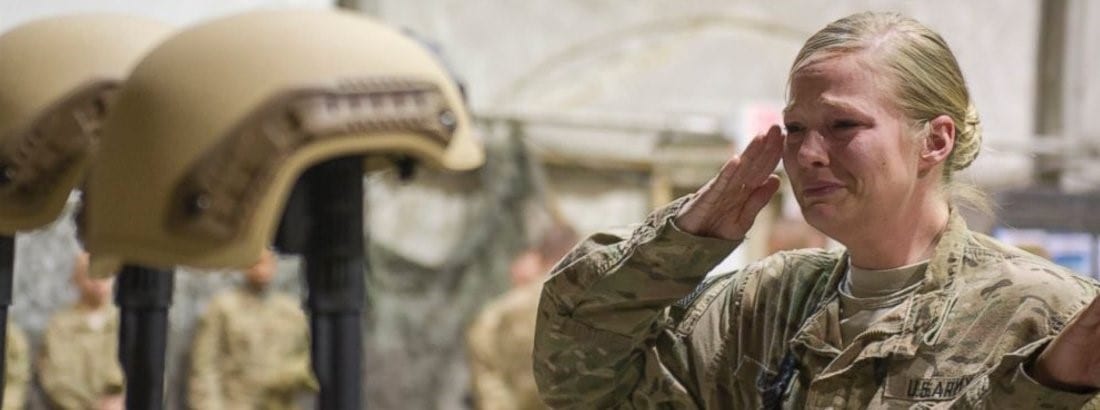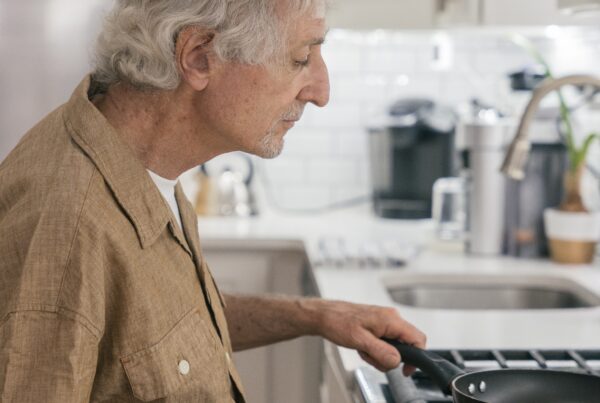by Jennifer K. Rea, PhD.
“We join on the premise to be part of a brotherhood and then struggle to fit in. When we leave, we no longer struggle to fit in anymore. ‘I’m going to say goodbye to that chapter of my life.’ It’s unfortunate, but I think that’s true.”
–Kate Germano, American Author and Former Lieutenant Colonel in U.S. Marine Corps
Women and men experience various transitions both during and after their military service. As a result of such transitions, challenges encountered by some servicemembers and veterans are not always a seamless experience. For instance, some military men and women have difficulty “securing employment and housing , addressing physical or mental health issues, and adjusting to civilian life and culture” (Atuel & Castro, 2018, p. 79).
As servicemembers respond to transitions of post-deployment reintegration or leave active duty service/status, many struggle to navigate “changes in their identity, employment, sense of purpose, and membership in a social group” (Thomas, Haring, McDaniel, Fletcher, & Albright, 2017, p. 2). Such shifts may cause significant problems as a servicemembers lose their social community and network of support.
Social Support and The Health of Women Veterans
Interestingly, the health of military women has been declining over the last several years (Thomas et al., 2016). Challenges such as “financial instability, family caregiving responsibilities, and lack of social support contribute to stress injury (i.e., physical or mental stress on one’s body) and depression rates that are over 2.3 times greater for women veterans leaving active duty than for male veterans” (Thomas et al., 2017, p. 2). Various studies have found that a lack of social support can likely result in increased depression symptoms, comorbid depression and anxiety, and increases in reported suicide attempts (rates are 250% higher than they are among civilian women), particularly for female veterans (Lehavot & Simpson, 2013; Nayback-Beebe, 2010; Thomas et al., 2016; Thomas et al., 2017).
Recent separation from the military has been found to be a greater predictor of mental illness in veterans as compared to combat deployments themselves (Thomas et al., 2016). That is, veterans are increasingly reporting significant difficultly in connecting to their civilian communities and making sense of their lives as they become a civilian (Thomas et al., 2018). Reintegration challenges related to poor transition outcomes tend to be greater for women and for racial/ethnic/sexual minority veterans (Thomas et al., 2016).

Cover image and logo used with permission by Women Veterans in Crisis
Women Veterans and the Unique Obstacles They Face
Today, at a rapid speed, women are adding to the veteran population (10% of veterans are women; VA.gov, 2020) and approximately 15% comprise the total Armed Services (Thomas et al., 2017). However, women are experiencing far greater issues than their male counterparts, including:
-
- Subtle and not-so-subtle discrimination combined with cultural issues (Thomas et al., 2016);
- Higher risk for military sexual trauma (MST; an estimated 20-40%) and harassment (Koo & Maguen, 2014);
- Issues with stigma and reporting barriers (Kelly, Skelton, Patel, & Bradley, 2011) and;
- Lack of social support, feelings of alienation and decreased unit cohesion (Kline et al., 2013; Thomas et al., 2017).
Furthermore, military women are more likely to be divorced than male counterparts or civilian women, less likely to be married, and five times more likely to be in a dual-service member marriage than men (National Center for Veterans Analysis and Statistics, 2017).
Connecting Women Veterans to the ‘Right’ Resources
In combination, it is important that we, as military family service professionals (MFSPs), not only consider the uniqueness of each female servicemember and veteran, but we must also recognize the distinctive challenges that each woman faces as well. This is especially important as female servicemembers transition from military to civilian life. This shift can be “just as challenging when our society has little understanding of women veterans’ military service, job skill sets, and valuable leadership experience” (Smith, 2020, p. 191).
To my own surprise, I learned that “fewer than 30% of women veterans self-identify as veterans in their community and they are often unaware of the benefits and services that are available to them” (Goldstein, 2020, p. 4). In fact, 71% of female veterans are not current members of a Veteran Service Organization (Thomas et al., 2017) . This is problematic as women veterans may not be able to receive the social support they need. Therefore, potentially negatively impacting their overall health and presence of resiliency in their transition to civilian life (Goldstein, 2020).
Several unique strategies have been found to better support women veterans as they transition from military to civilian life (Bruggeman & Rosen, 2019; Smith, 2020; Thomas et al.,2018). Here a few you might add to your professional toolbox:
-
- Allow women to recognize their own true, authentic self, and their ability to lead.
- Assist women to steer away from molding to the surrounding culture of a male-dominated environment.
- Build upon innate characteristics, such as empathy, collaboration, and creativity which women contribute to a larger degree than men.
- Construct successful mentoring relationships to develop feelings of trust and connectedness by providing healthy doses of affirmation, role modeling, and creating safe places for women veterans to openly share.
- Create environments that feel safe, welcome, and respected to ensure that women veterans continue to actively seek support.
- Develop an awareness, sensitivity, and knowledge of female veterans and the unique experiences they have or are currently facing.
- Make child care available and accessible to women veterans during events or workshops.
- Provide culturally competent programming and training.
Resources to Support Women Veterans
-
- America’s Warrior Partnership brings local veteran-centric nonprofits together through coordination and collaboration, ensuring consistent information is obtained, relevant services are provided, and national resources are utilized.
- The Center for Women Veterans (CWV) was established to monitor and coordinate Veteran’s Affairs (VA) administration of health care and benefits services and programs for women veterans. They serve as a resource and referral center for women veterans, their families, and their advocates.
- Minority Veterans of America is a non-profit organization designed to create belonging and advance equity for underrepresented veterans, including women, people of color, LGBTQ, and religious minorities.
- The Mission Continues is a national nonprofit organization that connects military veterans with new missions in under-resourced communities.
- The Women Veterans Leadership Program is an individualized program allowing women to build leadership skills, network and build community among other women veterans, and empowers women to advocate for themselves, serve in non-veteran and under-resourced communities.
- The Substance Abuse and Mental Health Services Administration (SAMHSA) provides a list of culturally competent resources designed to assist primary health care and behavioral health providers who care for current former service members and their families.
- The Service Women’s Action Network (SWAN) was founded to provide community networking, information resources, supportive programming, and to advocate for the individual and collective needs of servicewomen.
- VA Benefits and Programs for Women Veterans Women Veteran Coordinators (WVCs) are located in every regional VA office and function as the primary contact for women veterans. WVCs provide specific information and comprehensive assistance to women veterans, their dependents, and beneficiaries concerning VA benefits and related non-VA benefits. Find a regional office near you.
At each VA medical center, a Women Veterans Program Manager (WVPM) is designated to advise and advocate for women veterans. A WVPM can help you coordinate all the services a women veteran may need, from primary care to specialized care. To learn more about the VA Health Care for Women Veterans, visit https://www.womenshealth.va.gov or visit https://www.va.gov/directory to find the nearest VA medical Center.
Every VA facility has a designated MST (military sexual trauma) Coordinator who serves as a contact person for MST-related issues. This person is an advocate and resource to help female veterans find and access VA services and programs, state and federal benefits, and community resources. - The Veterans of Foreign Wars (VFW) ensures that women veterans receive veterans’ benefits and services that honor their brave military service and provide additional resources
Keep the conversation going; please share your comments and thoughts below on the transition from military to civilian life for women veterans.
For additional information and resources on servicewomen, female veterans, and various military-related transitions, be sure to check out this resource page on women in the military. In addition, tune in to recent podcast episodes, including conversations I’ve had with experts who share their knowledge and beneficial strategies for better supporting female service members and women veterans as they transition to civilian life. Three Let’s Talk Transitions episodes I would like to highlight are:
-
- Lending a Hand to Women Veterans as They Transition from Military to Civilian Life with Dr. Kate Hendricks Thomas
- Dual-Military Couples and Women in the Military: Balancing Career & Family with Dr. David Smith
- Fighting for their Right to Fight: Women in the U.S. Military with Rosemary Neidel-Greenlee
This article was written by Jenny Rea, doctorate in Family Social Science, military spouse, and mom to three kiddos under four. Jenny consults with the OneOp Family Transitions team to support professional development for military family service providers. You may find more blogs, podcasts and webinars from Family Transitions. We invite you to engage with Family Transitions on Twitter @MFLNFT and with OneOp on Facebook @MilitaryFamilies.
Women in the Military_Infographic_2021.02.01 FINAL
References
-
- Atuel, H., & Castro, C. A. (2018). Military cultural competence. Clinical Social Work Journal, 46(1), doi: 10.1007/s10615-018-0651-z
- Bruggeman, M. B., & Rosen, G. (2019). The way forward: Successful outreach to women veterans in Invisible Veterans: What Happens When Military Women Become Civilians Again, 203.
- Goldstein, A. N. (2020). No one understands us: Mapping experiences of women in the U.S. military in Invisible Veterans: What Happens When Military Women Become Civilians Again.
- Kelly, U. A., Skelton, K., Patel, M., & Bradley, B. (2011). More than military sexual trauma: Interpersonal violence, PTSD, and mental health in women veterans. Research in Nursing & Health, 34(6), 457-467.
- Kline, A., Ciccone, D. S., Weiner, M., Interian, A., St. Hill, L., Falca-Dodson, M., … & Losonczy, M. (2013). Gender differences in the risk and protective factors associated with PTSD: a prospective study of National Guard troops deployed to Iraq. Psychiatry: Interpersonal & Biological Processes, 76(3), 256-272.
- Koo, K. H., & Maguen, S. (2014). Military sexual trauma and mental health diagnoses in female veterans returning from Afghanistan and Iraq: Barriers and facilitators to Veterans Affairs care. Hastings Women’s LJ, 25, 27.
- Lehavot, K., & Simpson, T. L. (2013). Incorporating lesbian and bisexual women into women veterans’ health priorities. Journal of General Internal Medicine, 28(2), 609-614.
- National Center for Veterans Analysis and Statistics. (2017). Minority veterans report. Retrieved from https://www.va.gov/vetdata/docs/SpecialReports/Minority_Veterans_Report_Final.pdf
- Nayback-Beebe, A. M. (2010). Post-deployment social support and social conflict in female military veterans. The University of Texas at Austin.
- Smith, D. (2020). The power of mentoring for women veterans in Invisible Veterans: What Happens When Military Women Become Civilians Again.
- Thomas, K. H., Haring, E. L., McDaniel, J., Fletcher, K. L., & Albright, D. L. (2017). Belonging and support: Women veterans’ perceptions of veteran service organizations. Journal of Veterans Studies, 2(2).
- Thomas, K. H., McDaniel, J. T., Haring, E., Albright, D. L., & Fletcher, K. (2018). Mental health needs of military and veteran women: An assessment conducted by the Service Women’s Action Network. Journal of Traumatology, 24(2), 104-112. doi: 10.1037/trm0000132
- Thomas, K. H., Albright, D. L., Shields, M. M., Kaufman, E., Michaud, C., Taylor, S., & Hamner, K. (2016). Predictors of depression diagnoses and symptoms in United States female veterans: Results from a national survey and implications for programming. Journal of Military and Veterans Health, 24(3), 6.
- S. Department of Veterans Affairs (VA.gov). (2020). Women veterans health care. Retrieved from https://www.womenshealth.va.gov/
Writers Biography
 Jenny Rea, Ph.D., is a military spouse and mom of four kiddos under six years. Jenny consults with OneOp and is an Assistant Professor of Practice in the Department of Human Services and Director of the Certificate in Military Families at the University of Arizona.
Jenny Rea, Ph.D., is a military spouse and mom of four kiddos under six years. Jenny consults with OneOp and is an Assistant Professor of Practice in the Department of Human Services and Director of the Certificate in Military Families at the University of Arizona.
Photo source: Cover image and logo used with permission by the VFW.org















